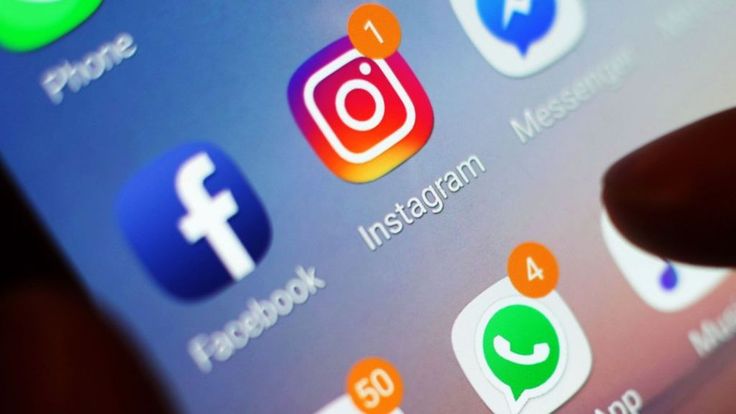Creating effective app install ads on platforms like Facebook and Google Ads requires a well-thought-out strategy, combining eye-catching visuals, compelling ad copy, audience targeting, and optimization techniques. These platforms offer powerful tools to reach potential users, but to maximize your ad’s performance, it’s important to follow best practices. Below is a comprehensive guide to creating app install ads that drive downloads and engagement.
1. Understand Your Audience
The foundation of any successful advertising campaign is a deep understanding of your target audience. This helps you tailor your messaging, visuals, and targeting strategies.
Steps to Define Your Audience:
- Analyze Your Current Users: Use analytics tools like Google Analytics, Facebook Audience Insights, or your app’s built-in tools to understand your existing user demographics, interests, and behaviors.
- Segment Your Audience: Break down your audience into specific segments based on age, gender, location, device type, interests, and app usage patterns.
- Create Buyer Personas: Develop detailed profiles of your ideal users, including their pain points, preferences, and motivations for downloading your app.
- Use Retargeting Audiences: Reach out to users who have interacted with your app or website but haven’t installed the app yet.
2. Choose the Right Ad Format
Both Facebook and Google Ads offer various ad formats tailored for app install campaigns. Selecting the right format depends on your goals and target audience.
Facebook Ad Formats:
- App Install Ads: These ads are specifically designed to drive app downloads. They include a “Download” or “Install Now” button that directs users to your app’s store page.
- Video Ads: Showcase your app’s features in action through engaging videos.
- Carousel Ads: Highlight multiple features or benefits of your app in a swipeable format.
- Playable Ads: Let users interact with a demo of your app before downloading, ideal for gaming or interactive apps.
Google Ad Formats:
- Universal App Campaigns (UAC): Google’s UAC automatically optimizes your ads across Google Search, YouTube, Display Network, and Google Play.
- Search Ads: These appear in Google search results and are effective for targeting high-intent users.
- Display Ads: Visual ads that appear on Google’s Display Network and partner sites.
- YouTube Ads: Leverage video content to showcase your app and its benefits.
- Discovery Ads: Reach users across Google Discover, YouTube, and Gmail.
3. Craft Engaging Ad Copy
Your ad copy is crucial for capturing attention and driving conversions. It needs to be concise, persuasive, and action-oriented.
Tips for Writing Effective Ad Copy:
- Highlight Benefits, Not Features: Focus on how your app solves a problem or makes life easier. For example, instead of saying “Track your workouts,” say “Achieve your fitness goals with ease.”
- Use Power Words: Incorporate words that evoke emotion and urgency, such as “free,” “limited-time,” “exclusive,” or “easy.”
- Include a Clear Call-to-Action (CTA): Guide users with actionable phrases like “Download Now,” “Get Started,” or “Try it Free.”
- Personalize the Message: Use language that resonates with your target audience, addressing their specific needs or desires.
- Keep it Short and Simple: Most users won’t read long ads, so ensure your copy is concise and to the point.
4. Design Eye-Catching Visuals
Visual content is the first thing users notice, so it’s critical to invest in high-quality visuals that capture attention and convey your app’s value.
Best Practices for Ad Creatives:
- Use App Screenshots or Videos: Showcase your app’s interface or key features in action. Ensure the visuals are clean, clear, and highlight the best parts of your app.
- Incorporate Your Branding: Use consistent colors, fonts, and logos to establish brand recognition.
- Create Multiple Variations: Test different designs to see which resonates best with your audience.
- Focus on the First Few Seconds: For video ads, ensure the first 3–5 seconds are captivating to prevent users from skipping the ad.
- Add a Visual CTA: Reinforce the action you want users to take with a button or text overlay like “Download Now” or “Play Now.”
- Optimize for Mobile: Most users will view your ads on mobile devices, so ensure your visuals are optimized for small screens.
5. Leverage Targeting Options
Both Facebook and Google Ads offer robust targeting tools to help you reach the right audience. Effective targeting ensures your ad budget is spent on users who are most likely to install and use your app.
Facebook Targeting Options:
- Demographics: Target users based on age, gender, location, education, and more.
- Interests and Behaviors: Reach users with specific interests or behaviors related to your app category.
- Custom Audiences: Upload a list of existing users or use website/app traffic data to target similar users.
- Lookalike Audiences: Expand your reach by targeting people who share characteristics with your existing users.
Google Ads Targeting Options:
- Keywords: Target users searching for specific terms related to your app.
- Demographics and Interests: Use demographic and interest-based targeting to reach potential users.
- In-Market Audiences: Target users actively searching for apps in your category.
- Retargeting: Re-engage users who visited your website or app but didn’t install.
6. Incorporate Strong CTAs
The Call-to-Action (CTA) is critical for driving app installs. Your CTA should be clear, concise, and directly related to the desired action.
CTA Examples:
- “Download Now and Start Saving!”
- “Get Fit Today – Install Our App!”
- “Your Next Adventure Awaits – Download Now!”
- “Play for Free – Install Now!”
7. A/B Test Your Ads
Continuous testing and optimization are essential for improving ad performance. A/B testing allows you to compare different versions of your ads to see which performs better.
Elements to A/B Test:
- Ad Copy: Test different headlines, descriptions, and CTAs.
- Visuals: Compare different images, videos, or design styles.
- Targeting: Experiment with various audience segments.
- Ad Formats: Test between carousel, video, and playable ads.
- Bidding Strategies: Try different bidding methods like cost-per-install (CPI) or cost-per-click (CPC).
8. Optimize for App Store and Play Store Conversion
Your app store listing plays a crucial role in converting users who click on your ads. A poorly optimized listing can result in users abandoning the download process.
Key Optimization Tips:
- Compelling App Title and Description: Highlight your app’s core benefits and unique features.
- High-Quality Screenshots and Videos: Showcase your app’s functionality and design.
- Positive Reviews and Ratings: Encourage satisfied users to leave reviews, as they influence potential users.
- Localized Listings: Translate your app’s listing for different regions to appeal to global audiences.
9. Monitor Performance and Optimize Campaigns
Regularly analyzing your campaign performance helps you identify what’s working and what needs improvement.
Metrics to Monitor:
- Cost Per Install (CPI): Measure the cost-effectiveness of your ad campaign.
- Click-Through Rate (CTR): Assess how engaging your ad creatives are.
- Conversion Rate: Track the percentage of users who install the app after clicking your ad.
- Retention Rate: Monitor how many users continue using your app after installation.
- Return on Ad Spend (ROAS): Evaluate the revenue generated from your app install campaigns.
Tools for Optimization:
- Facebook Ads Manager: Use insights and recommendations to improve ad performance.
- Google Ads Dashboard: Optimize keywords, bids, and targeting based on performance data.
- Third-Party Tools: Platforms like Adjust, AppsFlyer, or Branch can help track and optimize app install campaigns.

10. Retarget and Re-Engage Users
Not all users will download your app immediately after seeing your ad. Retargeting can help you re-engage these users and encourage them to complete the installation.
Retargeting Strategies:
- Dynamic Ads: Show personalized ads based on the user’s previous interactions.
- Special Offers: Use discounts or promotions to incentivize users to download your app.
- Push Notifications: If the user has already installed the app but isn’t active, send tailored notifications to re-engage them.
Conclusion
Creating effective app install ads on Facebook and Google Ads involves a combination of understanding your audience, crafting compelling ads, leveraging advanced targeting options, and continuously optimizing your campaigns. By focusing on high-quality visuals, engaging copy, and actionable CTAs, you can drive installs and build a loyal user base. Regular monitoring and A/B testing will help you refine your approach and maximize your return on investment (ROI). With the right strategy, your app install campaigns can become a significant driver of growth and success.



